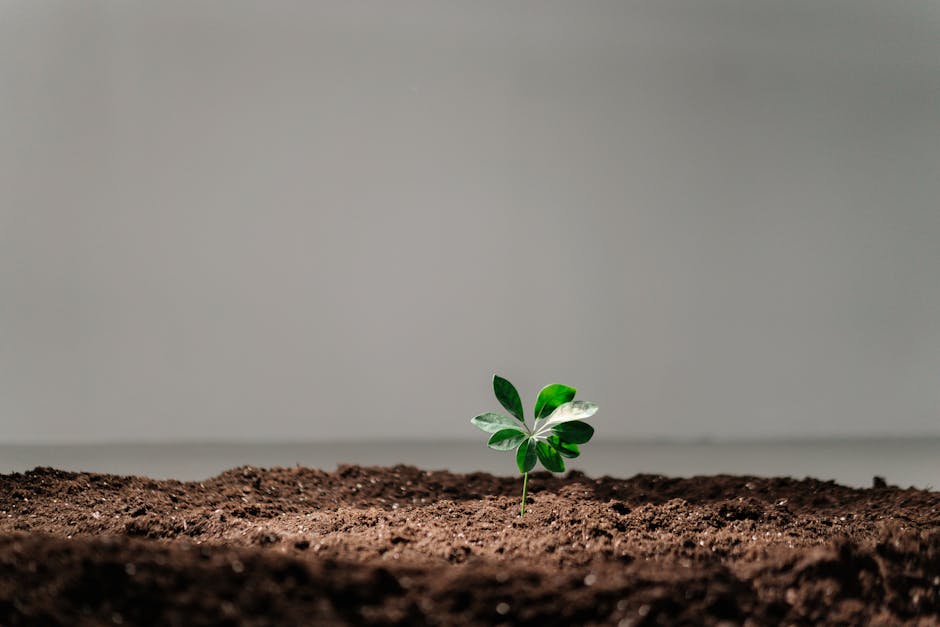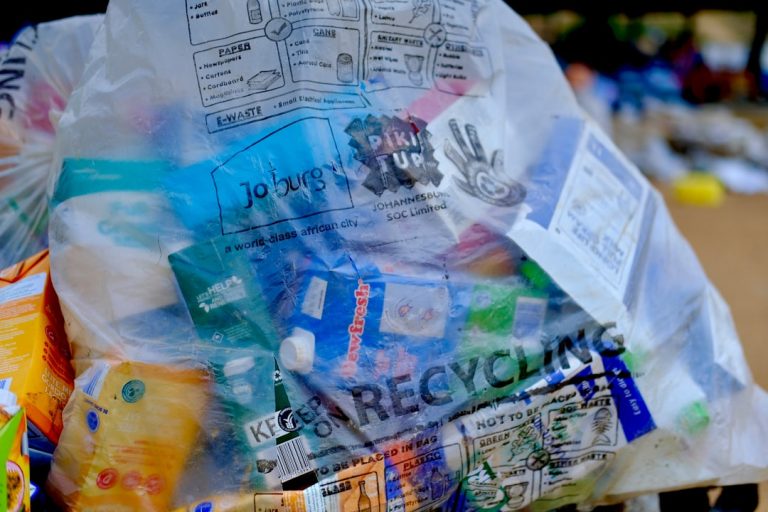The Impact of Biodegradable Packaging on Consumer Choices (my Insights).
The Impact of Biodegradable Packaging on Consumer Choices (my Insights)
In a world increasingly grappling with environmental challenges, the spotlight on sustainable practices has never been brighter. Among the myriad solutions emerging, biodegradable packaging stands out as a tangible, everyday change that consumers encounter directly. From the coffee cup we grab on our morning commute to the fresh produce wrapped for our dinner, the materials encasing our goods are undergoing a silent revolution. But how exactly does this shift influence our purchasing decisions? What impact does the presence of “biodegradable” labels truly have on our choices at the checkout? Through my observations and insights, I’ve seen firsthand how this evolving landscape is reshaping consumer behavior, preferences, and even trust.
Shifting Perceptions: How Biodegradable Packaging Reshapes Our Shopping Mindset
The journey from a disposable, plastic-dominated mindset to one that values biodegradability isn’t just about environmental awareness; it’s a fundamental shift in perception. What I’ve consistently observed is that consumers are no longer just buying a product; they’re buying into a brand’s values, and packaging is often the most immediate visual cue. The “my insights” here stem from countless conversations, market analyses, and personal shopping experiences. People are becoming increasingly attuned to the lifecycle of a product, long after it leaves their hands.
The Growing Weight of Environmental Conscience in Purchasing Decisions
For many years, convenience and price were the undisputed kings of consumer choice. While they remain significant factors, a powerful new contender has emerged: environmental conscience. My observations confirm that a growing segment of consumers actively seeks out products with biodegradable packaging, not just because it’s a ‘nice-to-have,’ but because it aligns with their personal values regarding sustainability. They feel a sense of responsibility to reduce their carbon footprint and contribute to a healthier planet. This isn’t a fleeting trend; it’s a deeply ingrained ethical consideration that now weighs heavily in their decision-making matrix. Brands that ignore this do so at their peril.
From Niche to Norm: My Observations on Mainstream Acceptance
Initially, biodegradable packaging was often relegated to niche health food stores or premium organic brands. However, my insights reveal a dramatic mainstreaming of this preference. Major supermarkets, global fast-food chains, and even everyday household brands are now integrating biodegradable options. This widespread adoption isn’t solely driven by corporate social responsibility; it’s a direct response to consumer demand. When a mainstream brand offers a choice between plastic and a biodegradable alternative, I’ve seen a clear leaning towards the latter, even if other factors are equal. This indicates that what was once a differentiator for a few is quickly becoming an expectation for the many, fundamentally altering the competitive landscape.
The Green Premium Dilemma: Are Consumers Truly Willing to Pay More?
One of the most complex aspects of biodegradable packaging’s impact on consumer choices is the “green premium.” It’s a common assumption that sustainable options inherently cost more to produce, and this cost often translates to a higher retail price. My insights suggest that while a willingness to pay more for eco-friendly products exists, it’s not universal and is influenced by several nuanced factors.
Balancing Cost, Convenience, and Conscience
From my perspective, consumers often perform a mental calculus at the point of purchase. They balance the perceived benefits of biodegradable packaging (environmental good, ethical consumption) against the immediate costs (higher price, potential inconvenience if disposal is unclear) and the overall utility of the product. For everyday staples or low-value items, the tolerance for a significant price increase due to packaging is generally lower. However, for specialty items, luxury goods, or products where the sustainable aspect is a core part of the brand identity, consumers are often more amenable to paying a slight premium. This isn’t a black-and-white issue; it’s a spectrum where different product categories and consumer segments react differently.

Brand Storytelling and the Value Proposition of Sustainable Choices
Crucially, my observations highlight the power of effective brand storytelling in justifying a green premium. When brands transparently communicate *why* their packaging is biodegradable, *how* it benefits the environment, and *what* efforts they’ve made to mitigate costs, consumers are far more likely to embrace the higher price. It moves beyond just a material choice to a value proposition. Brands that simply slap a “biodegradable” label on a pricier product without context often fail to sway consumers. Those that educate, inspire, and demonstrate genuine commitment, however, build a loyal customer base willing to invest in their vision. This insight underscores that the impact isn’t just about the packaging itself, but the narrative woven around it.
Beyond Eco-Labels: Building Trust and Battling Greenwashing Skepticism
The proliferation of “eco-friendly” claims has inadvertently created a new challenge: skepticism. My insights into consumer behavior reveal a growing wariness towards labels that lack clear definitions or credible certifications. This “greenwashing” phenomenon, where companies make misleading environmental claims, has eroded trust and made consumers more discerning when it comes to biodegradable packaging.
The Crucial Role of Transparency and Certification
To truly impact consumer choices positively, biodegradable packaging must be backed by unwavering transparency and reputable certifications. I’ve seen how consumers actively look for seals of approval from independent bodies (e.g., BPI Compostable, TÜV Austria OK Compost) that verify a product’s biodegradability claims. Without these, even well-intentioned efforts can fall flat, as consumers default to skepticism. Brands that clearly explain the type of biodegradable material used, its end-of-life process (e.g., home compostable, industrial compostable), and back it up with certifications, build a strong foundation of trust that directly influences purchasing decisions.
My Insights on Consumer Education and Dispelling Misconceptions
A significant part of building trust lies in consumer education. Many people conflate “biodegradable” with “compostable,” or assume all biodegradable materials break down quickly in any environment. My experiences show that brands have a responsibility to clarify these nuances. Simple, clear instructions on packaging about proper disposal (e.g., “Compost in industrial facilities only,” “Home compostable”) can empower consumers and prevent frustration. When consumers understand how to correctly dispose of biodegradable packaging, they feel more confident in their purchase, knowing their sustainable choice will actually make a difference. This clarity directly mitigates skepticism and reinforces the positive impact on their choices.
Convenience vs. Conscience: Integrating Biodegradable Options into Daily Life
While environmental conscience is a powerful driver, the reality of daily life often pits it against convenience. My insights confirm that for biodegradable packaging to truly win over the masses, it cannot be a burden. Its integration into consumer choices hinges significantly on how seamlessly it fits into existing routines and infrastructure.
The Practicalities of Disposal and Infrastructure
The “last mile” of biodegradable packaging – its disposal – is a critical factor influencing consumer adoption. If a consumer purchases a product with compostable packaging but lacks access to industrial composting facilities, their positive intent can quickly turn into frustration. My observations suggest that this disconnect can actually deter future purchases of similar products, even if the packaging itself is innovative. The impact on choice is thus heavily tied to the availability and clarity of disposal options. Without adequate municipal composting or clear home composting guidelines, the perceived benefit of biodegradable packaging diminishes significantly, regardless of its inherent eco-friendliness. The Ellen MacArthur Foundation has done extensive work on circular economy principles, highlighting the importance of infrastructure.
Driving Adoption Through Seamless User Experience
From my perspective, the true success of biodegradable packaging lies in making the sustainable choice the easy choice. This means designing packaging that is not only eco-friendly but also functional, durable, and intuitive to use and dispose of. If a biodegradable container leaks, breaks easily, or is confusing to open, consumers will quickly revert to more convenient, albeit less sustainable, alternatives. Brands that innovate to create biodegradable packaging that performs as well as, or better than, traditional plastics, while also providing clear disposal instructions, are the ones I’ve seen effectively drive consumer preference. The European Bioplastics association provides valuable resources on material advancements.
My Forward Look: The Evolving Landscape of Sustainable Packaging and Consumer Behavior
Looking ahead, the impact of biodegradable packaging on consumer choices is poised for even greater transformation. My insights suggest a dynamic interplay between technological advancements, regulatory pressures, and an ever-more-informed consumer base. This isn’t a static market; it’s a rapidly evolving ecosystem.
Innovation as a Catalyst for Change
The pace of innovation in biodegradable materials is staggering. From seaweed-based films to mycelium packaging, new solutions are constantly emerging that address previous limitations in cost, performance, and scalability. As these innovations mature and become more cost-effective, I anticipate a significant positive impact on consumer choices. Lower prices, improved functionality, and broader applications will make biodegradable packaging an even more attractive option, pushing it further into mainstream acceptance. Consumers will have more compelling, practical, and affordable sustainable choices available to them, influencing their decisions profoundly.
Policy, Pressure, and the Future of Our Choices
Beyond market forces, regulatory frameworks and societal pressure will continue to shape consumer behavior. Governments globally are implementing bans on single-use plastics and promoting sustainable alternatives, which directly influences the availability of biodegradable options and, consequently, consumer choices. My insights indicate that as these policies tighten, consumers will increasingly be guided towards eco-friendly packaging, not just by preference but by necessity. Furthermore, the collective voice of consumers demanding more sustainable options will continue to pressure






